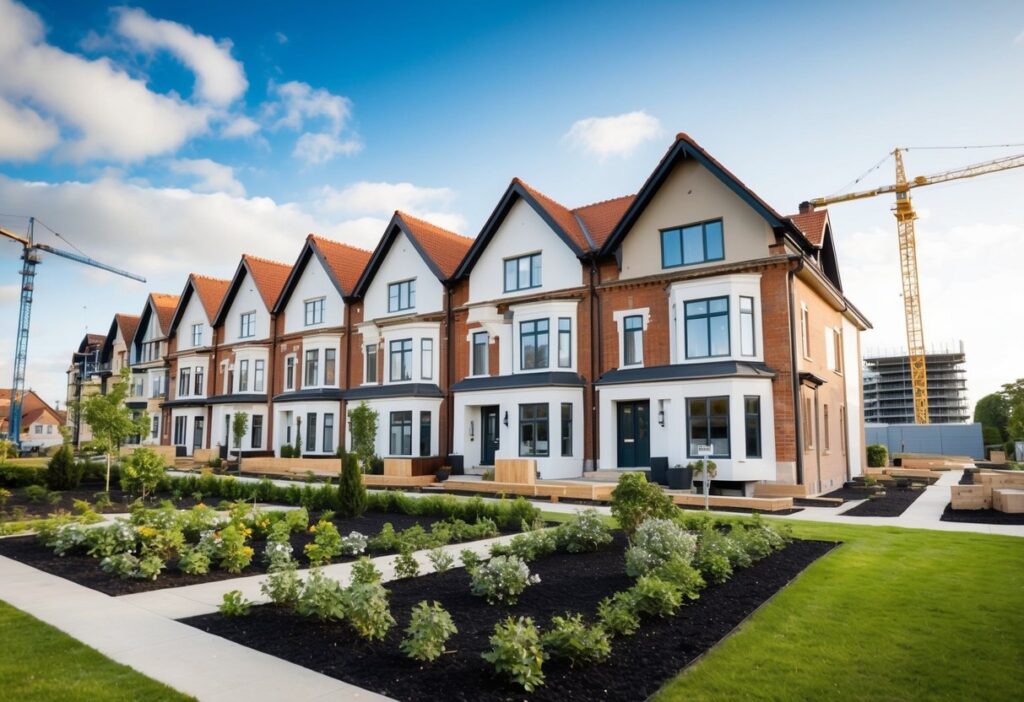Anúncios
Finding a neighborhood on the rise before everyone else is a skill that can lead to significant financial gains.
Home buyers and investors who spot emerging areas early often enjoy better prices and stronger returns as the neighborhood develops.

The key signs of an up-and-coming neighborhood include new businesses opening, improved transportation options, decreasing crime rates, and increased renovation activity.
These indicators often appear months or years before property values dramatically increase, giving observant buyers a valuable window of opportunity.
Timing matters in real estate, and waiting too long can mean missing out on both affordability and potential appreciation.
By learning to identify these neighborhood transformation signals, buyers can make more informed decisions about where to invest their money for the best long-term value.
Understanding Real Estate Market Dynamics

Real estate markets follow predictable patterns influenced by economic factors and population movements. Successful investors track these indicators to spot neighborhoods poised for growth before prices surge.
Economic Indicators Impacting Property Values
Job growth serves as a primary driver of neighborhood development. Areas gaining new employers or experiencing business expansion typically see housing demand increase.
Wage growth in a region also contributes significantly to real estate appreciation.
Interest rates directly affect buying power. When rates fall, more people can afford to purchase homes, driving up demand and prices. Conversely, rising rates can cool previously hot markets.
Infrastructure development often signals upcoming growth. New transit lines, schools, parks, or commercial centers make neighborhoods more attractive to potential buyers.
Local government policies matter too. Tax incentives, zoning changes, and development-friendly regulations can transform neglected areas into desirable locations within a few years.
The Role of Supply and Demand in Real Estate
Real estate prices follow basic supply and demand principles. Limited housing inventory coupled with high buyer interest inevitably pushes prices upward. This explains why dense urban areas with building restrictions often have higher costs.
Population trends heavily influence demand patterns. Neighborhoods attracting young professionals, growing families, or retirees will see housing needs shift accordingly.
Construction activity provides valuable supply-side insights. Areas with multiple new developments may soon have excess inventory, potentially slowing price increases. Conversely, neighborhoods with limited buildable land face supply constraints.
Rental market performance offers additional clues. Rising rents often precede home value increases, as investors recognize improved returns on properties. This pattern frequently appears in gentrifying areas before widespread redevelopment begins.
Key Signals of Neighborhood Growth

Recognizing a neighborhood on the rise requires attention to specific indicators that appear before property values increase. These signals often emerge across infrastructure, cultural offerings, and population changes.
Tracking Infrastructure Development
New construction projects often signal upcoming neighborhood growth. Look for road improvements, transit expansions, and utility upgrades that make areas more accessible and livable.
Government investment is particularly telling. When cities allocate funds for parks, schools, or public services in previously overlooked areas, private development typically follows.
Commercial construction provides strong clues as well. New retail spaces, office buildings, and mixed-use developments attract both residents and businesses to the area.
Pay attention to building permits and zoning changes. An increase in renovation permits often precedes neighborhood transformation. Many cities publish this data online, making it accessible for analysis.
Spotting Trends in Cultural and Lifestyle Offerings
New businesses, especially independent shops and restaurants, frequently pioneer neighborhood revivals. Watch for:
- Craft coffee shops and breweries
- Art galleries and studios
- Co-working spaces
- Specialty food markets
- Fitness studios
These establishments attract young professionals and families seeking unique experiences.
Community events like farmers’ markets, street festivals, and public art installations indicate growing neighborhood pride and identity. These activities make areas more appealing to potential residents.
Social media can reveal emerging hotspots. Instagram tags, location check-ins, and neighborhood hashtags show which areas are gaining popularity before traditional metrics catch up.
Identifying Patterns in Demographic Shifts
Population data reveals valuable insights about neighborhood trajectories. Rising educational attainment levels and median incomes often precede property value increases.
Age demographics matter significantly. Areas attracting younger residents (25-40) typically experience revitalization as these groups bring spending power and demand for housing.
Occupational shifts toward creative and professional sectors signal neighborhood change. More residents working in technology, design, education, and healthcare typically correlates with area improvements.
Watch for changes in household composition too. Areas shifting from primarily singles to more families often experience sustained growth and stability, driving long-term property value increases.
Assessing Property Investment Potentials
Savvy investors need concrete data and market insights to identify promising properties before neighborhood values surge. Smart investment decisions come from analyzing both historical trends and current market conditions.
Analyzing Historical Property Data
Property value histories reveal important patterns for investors. Look at price appreciation rates over 5-10 years to spot emerging trends. Areas with steady 3-5% annual growth often indicate stability, while sudden jumps might signal a neighborhood transformation.
Pay attention to:
- Days on market – Decreasing time properties spend listed
- Price-to-rent ratios – Lower ratios (under 15) suggest good investment potential
- Sale-to-list price ratios – When homes sell above asking price
City planning documents can reveal future infrastructure projects. New transit lines, parks, or commercial developments typically boost property values by 10-20% within a 1-mile radius.
Public records also show building permit activity. More renovation permits in an area often precede price increases by 12-18 months.
Evaluating Current Local Real Estate Listings
Current listings provide real-time market intelligence.
Compare similar properties across neighboring areas to identify price disparities. A significant gap (15%+) between adjacent neighborhoods might indicate upcoming appreciation.
Key indicators to monitor:
- Listing descriptions mentioning “up-and-coming” or “revitalization”
- Price reductions becoming less common
- Premium features appearing in more listings
Watch for commercial changes too.
New coffee shops, boutiques, and restaurants often appear 1-2 years before major property value increases.
Consider the “Starbucks Effect” – properties within ¼ mile of a new Starbucks location typically appreciate 5% faster than market average.
Track listing inventory levels. Decreasing supply combined with steady demand creates upward price pressure.